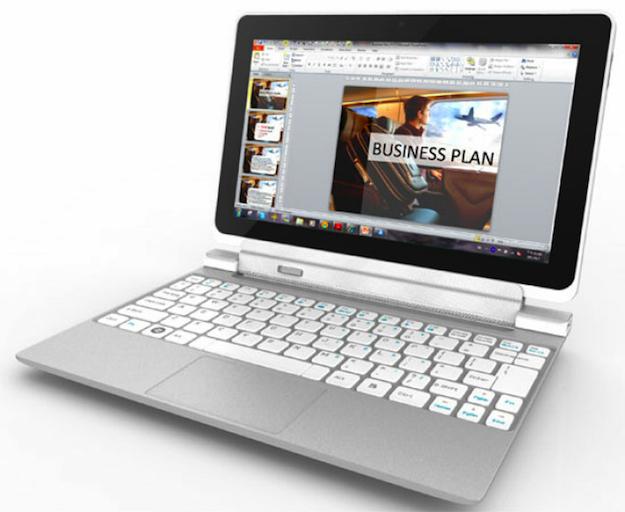
Check out our full review of the Acer Aspire S7 Windows 8 Ultrabook.
Acer has launched a series of Microsoft Windows 8 products at a press conference this morning. The news comes just ahead of the Computex 2012 show, where other Windows 8 hardware from competing manufacturers, such as Asus, is also expected to be unveiled.
A total of six products were introduced: Two tablets, two ultrabooks and two all-in-one desktop machines, all with Windows 8 installed and all featuring touchscreens.
Starting with the ultrabooks, they’re both new entries into Acer’s Aspire S7 series, and there’s a choice of either an 11.6-inch or 13.3-inch screen. Acer hasn’t been generous with details on either, though. We do know the 11.6-inch model will have 9-hours of battery life, and that the 13.3-inch version will have 12-hours, plus that an unnamed Intel chip will power both.
The screens will also fold back to a 180-degree angle, so the ultrabooks will lay completely flat, and the larger model will have a backlit keyboard. Acer says the pair will be “the thinnest and smallest, respectively, full HD touchscreen ultrabooks” available.
They’re good-looking too, with Acer using a 12 mm thick aluminum unibody design for both and a curvy glass cover for the 13.3-inch model. Pricing, according to PCWorld.com, will be between $999 and $1799.
 No ARM tablets
No ARM tablets
Information is equally as hard to come by on Acer’s new tablets too. There are two models, the Iconia W510 and the Iconia W700. The W510 has a 10.1-inch touchscreen, a microSD card slot, HDMI-out and on some models, cellular connectivity too. A keyboard dock can be added, which in addition to extending the battery life to 18-hours, has a versatile hinge that folds the keyboard back so it can be used as a stand for the screen.
The W700 has a larger 11.6-inch screen with a 1920 x 1080 resolution, the same array of connections as well as three USB and a Thunderbolt port, a 5-megapixel camera, and comes with a cradle-like stand. Like the ultrabooks, Acer didn’t confirm any prices, but a slide from the presentation indicated the W510 would cost between $599 and $799, while the W700 would be $799 to $999.
Both models will use an Intel processor, with the W700 using one of the latest Ivy Bridge chips, and according to a Reuters report, Acer has no plans to introduce tablets using ARM architecture.
Finally, Acer launched the 27-inch 7600U and the 23-inch 5600U all-in-one desktop machines, and the only firm information on the two was that the 7600U would feature a 64-point multitouch screen that can be laid flat for ease of use.
Acer’s CEO JT Wang is putting plenty of faith into Microsoft’s latest operating system, calling it a “breakthrough,” and referencing the company’s recent lackluster performance, said “we have a good opportunity to grow again after the Windows 8 launch.”
With no official release dates given for any of the new Windows 8 products, just like the operating system itself, we’re left to expect them sometime towards the end of the year.




